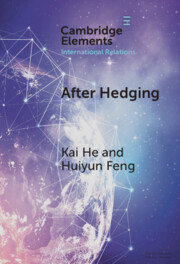Refine search
Actions for selected content:
2 results
12 - The Architectures of Alignment: Alliances, Security Institutions, Coalitions, and Strategic Partnerships
- from Part II - The Traditional Security Agenda
-
- Book:
- Understanding International Security
- Published online:
- 11 October 2025
- Print publication:
- 30 October 2025, pp 230-258
-
- Chapter
- Export citation

After Hedging
- Hard Choices for the Indo-Pacific States Between the US and China
-
- Published online:
- 08 September 2023
- Print publication:
- 05 October 2023
-
- Element
-
- You have access
- Open access
- HTML
- Export citation
